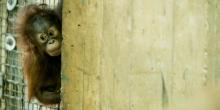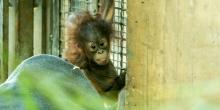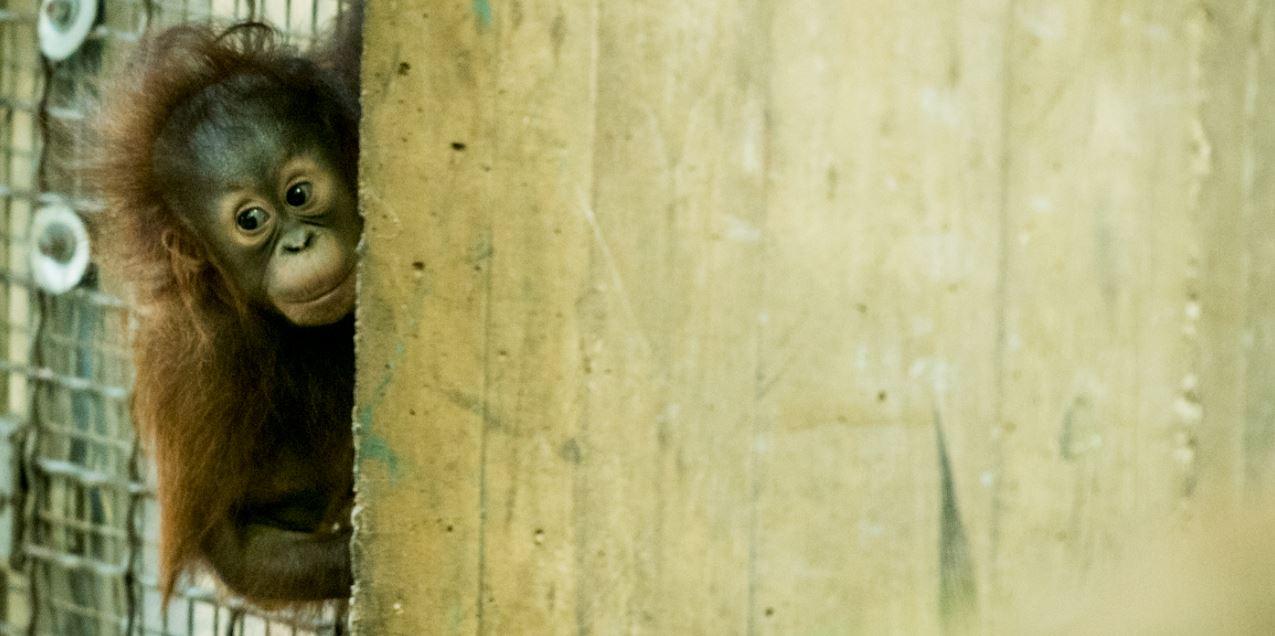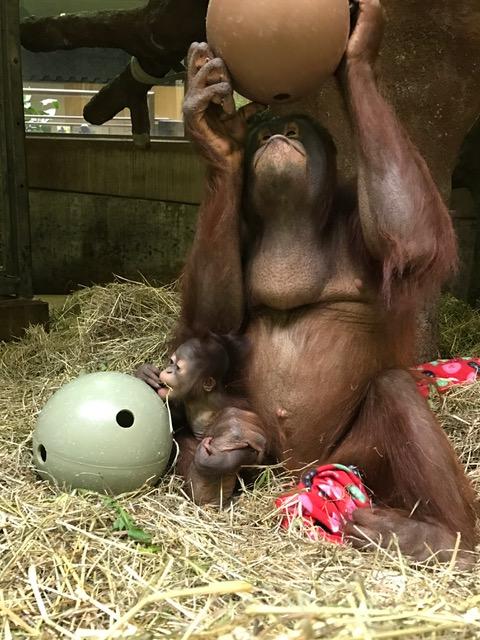Keeper Update: Orangutan Redd Has Four Teeth



Five-month-old Bornean orangutan Redd recently marked another milestone: he sprouted four teeth! Over the past few weeks, he’s been exploring everything in the Great Ape House habitat with his mouth, from chomping on enrichment items to nibbling 40-year-old Bonnie’s toes! Get the scoop on our growing primate infant from animal keeper Elliott Rosenthal.
Around five weeks ago, our 5-month-old Bornean orangutan infant, Redd, sprouted his first deciduous tooth! And, in the weeks since, three more mandibular teeth have emerged—two upper and two lower.
Just like humans, orangutans have 32 teeth. Along with teeth comes teething—and lately Redd has been using his mouth to explore his enclosure, food, enrichment items and even the other orangutans. The other day, I saw Redd nibble on Bonnie’s toes. It’s clear that Bonnie enjoys any attention that she receives from Redd, so she was very excited about that! Hay and enrichment items also serve as teething items, though mom, Batang, usually monopolizes the enrichment so she can retrieve the high-value food items (like nuts or grapes) hidden inside.
Lately, Redd has started sampling Batang’s regular diet. He’s tried a little bit of everything but tends to grab the lettuce first, possibly because it’s big and eye-catching. When he only had one tooth, he gummed the veggies but didn’t eat them. Now that he has more teeth, it appears that he’s ingesting some food. The only diet item that is still a little too tough for him to chew is primate chow, which comes in large fortified pellets that are hard and crunchy.
Redd is an opportunistic eater. He samples the foods that mom doesn’t want to eat right away—things like squash, zucchini and peppers. However, if she eats all of her other diet and decides that she wants the food that Redd is trying, she has no qualms about taking it from him. This is normal behavior for an orangutan mother. The amount of food Redd ingests doesn’t affect him nutritionally since the vast majority of the calories he consumes are still coming from nursing (orangutans typically nurse for about six years). He nurses at least once every hour for a few minutes at a time. Batang will sometimes interrupt Redd’s nursing session if it’s time to shift to a different enclosure or if she just feels like getting up and moving around.
The best time to see Redd and Batang at the Great Ape House is between 9 a.m. and 2 p.m. When we give the orangutans their afternoon diet, Batang prefers to eat in the off-exhibit enclosure. And, wherever Batang is, Redd is never far behind.


